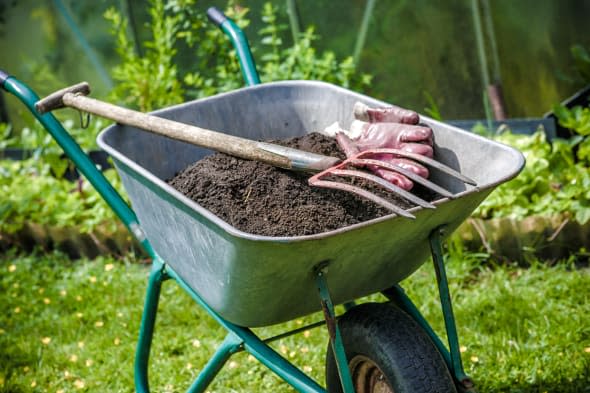Gardening jobs to do this April

Now the weather is warmer, thoughts are turning to the garden – and there are plenty of jobs to be getting on with this April.
Related Searches
When to sow
You may have already been sowing tomatoes inside or under cover but before you sow hardy vegetables outside (such as broad beans, seed potatoes, onions and shallots, and beetroot) the soil should be at least 6C. Half-hardy annuals like squash can also be sown but it's best to sow in pots and keep them under cover for now. Sweatpea plants that are already established in liners can be planted out too.
Care for the roses
Many plants need an extra feed to support their growth as the weather warms. Roses, in particular, will benefit from a foliage feed every three to four weeks. Shrubs and citrus plants will also benefit from an extra feed at this time of year. Roses, and other climbing plants that need support as they grow, can be tied in and smaller plants staked.
Domestic ponds
Now is a good time to clean up the pond, as warmer weather will cause any matter at the bottom to decompose and go smelly. Check that you don't have tadpoles, and drain by a third to allow easy access for the removal of fallen leaves and excess plants. Remember to leave debris beside the pond for a day before composting to let any wildlife crawl back to the water.
%VIRTUAL-AFCSponserAds%Turfing
Spring is also a good time to sow new grass seed and returf or repair bald patches. If you are laying new turf stagger the joints (as you would if building a brick wall) and work from boards, spreading your weight to push the turf gently and evenly into place. Feed the grass with a slow-release fertiliser to help bring it on.
Dahlias
Dahlia tubers that have been stored inside can be planted into well-manured soil. Should the temperature improve considerably, don't forget to remove any protective mulches you may have applied to those left in the ground.
Late frost
Of course, there's always the possibility of a late frost. If that occurs, it's best to sprinkle vulnerable plants with water the night before, as this covers them in a protective layer of slightly warmer water. Be sure to protect blossoming fruit trees with a layer of fleece, and do the same for any potatoes that may have broken ground.
Have you already been busy in the garden? What advice would you give to others...




